How I Outran Paralysis to Continue Fundraising for My Son's Illness
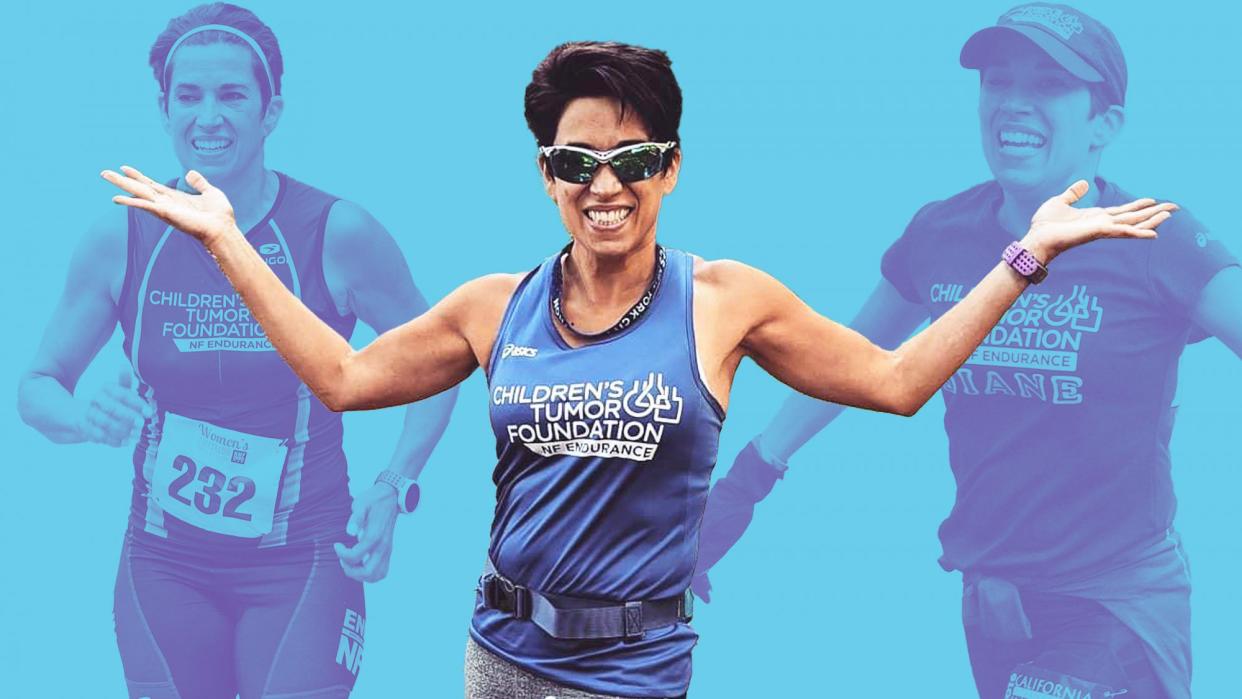
Image Courtesy of CTF
I can't count the number of times I've been told to "watch and wait" since my son Alex was diagnosed with neurofibromatosis type 1 (NF1) at 4 months old in February 2013.
The rare, incurable genetic disorder affects the nervous system and causes tumors to form in the brain, spinal cord, and nerves all over your body. While they're usually benign upon developing, these growths can sometimes become malignant (cancerous), according to the Mayo Clinic. And because the disease has such a range of severity and progresses very differently among patients, there was no telling how long Alex would live — not to mention whether he'd go deaf or blind, have bone deformities, struggle with high blood pressure, or develop cancer, all of which are possible complications of NF1. At that moment, we just couldn't know; hence, the advice of "watch and wait."
But there was no way I was going to sit back and look on as my child potentially deteriorated. So, while Alex's doctors cautioned us against Googling his condition, my husband and I, of course, did just that. And after we thoroughly freaked ourselves out, we followed one bit of the experts' advice and looked up the Children's Tumor Foundation (CTF).
The nonprofit's mission is to drive research, expand knowledge, and advance care for the NF community. The resources and information they have on their website are incredible, and I immediately wanted to get involved to further their work. After reaching out, a representative told me that one of the major ways people raise money for CTF is by running road races across the country. There was only one problem with that: I don't (well, didn't) run.
I mean, I'd run to the bar at last call, and I'd run from the car to the front door when it's raining, but endurance wasn't my thing. That said, I had a change of heart when my contact at CTF told me that anyone can do a 5K; she said that if I couldn't run it, I could walk it, which I didn't even know was an option. So, I signed up for my first 5K in March 2013 with CTF's NF Endurance Team, which gives people the opportunity to participate in endurance events such as running across the country to raise money for CTF.
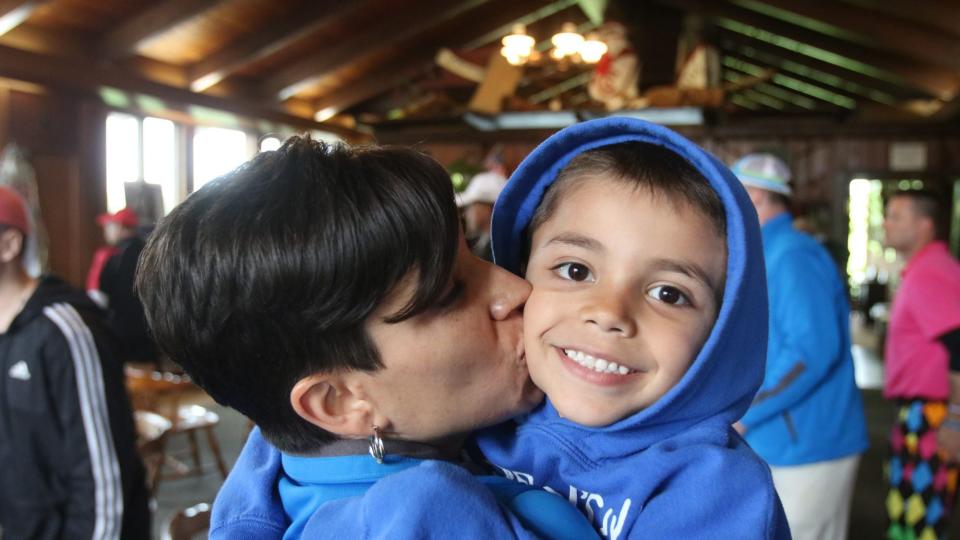
Image Courtesy of CTF
Becoming a Runner
The next step was to reach out to my friends and family for donations. From the get-go, I told everyone that I had a three-year plan: I was going to work my way up to running a 10-mile race the first year, a half marathon the next, and a full marathon the following year. I set that expectation for myself and for my circle, hoping that it would encourage them to continue donating to the cause.
In April 2013, as a precursor to my 10-mile race, I run-walked my first 5K, finishing in 38 minutes. My first thought after crossing the finish line? "I hate this." My feet begged to be iced and simply walking felt unbearable. But I felt like this was the only thing I could do to help my child and all the others living with NF1, which affects one in 3,000 people worldwide, according to CTF. (Another way to think about the prevalence? One hundred and twenty people are born with NF1 every day.)
In short, the fundraising kept me going. Also, knowing that the funds were going to CTF, an organization that seems to strike the right balance between patient advocacy and influence over researchers to advance understanding of the disease, made it worthwhile for me.
In October 2013, I run-walked my first 10-mile race in a little more than two hours. In 2014, I ran a series of 5Ks, completed a 7-mile race, and ran a half marathon for CTF's NF Endurance team. That same year, I also completed my first marathon ahead of schedule. It was clear, at that point, that running had officially become a part of my world — and I loved it. (Related: How Running Helped This Cancer Survivor Embrace Her Amputation)
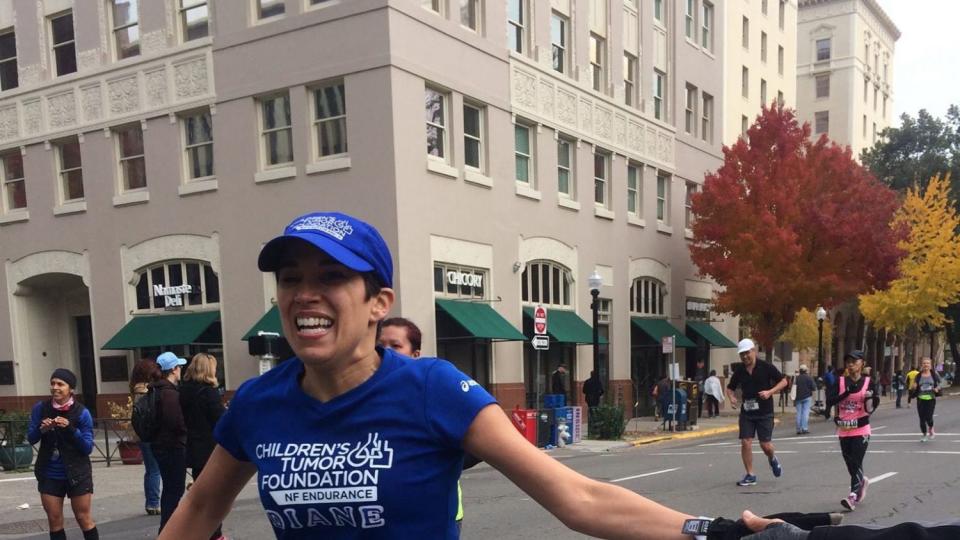
Image Courtesy of CTF
Then, on Easter Sunday 2015, we found a large tumor, known as a plexiform neurofibroma, on Alex's spine. An MRI showed that our son, then 2 1/2 years old, also had a brain tumor, known as an optic glioma, on his hypothalamus (the part of the brain that controls hunger, heart rate, sleep, thirst, among other functions). Both were inoperable. Worried sick, we helplessly asked our doctors what we could do to help our baby boy. Their answer was again to watch and wait. The tumors weren't causing any life-threatening symptoms, they explained. So we had no option but to wait and see if any treatments or interventions would be necessary.
I went to bed that night feeling like I had failed my son. I had no idea what to do and felt incompetent. I reached out to my contact at CTF, filling her in on the news, and asked if there was anything they could do to help. At 6 a.m. the next morning, I opened my inbox to find that she had sent me a list of specialists and clinics shared by other moms living across the North East. Overnight, I went from a place of complete darkness and confusion to one of empowerment.
My husband and I immediately began exploring our options and figuring out which expert was best suited to help Alex. The whole situation only fueled my desire to keep running, and by December 2015, I had run four half-marathons, three full marathons, and raised $70,000 for CTF since starting this journey in 2013.
But then my whole world turned upside down.
The Diagnosis That Changed Everything
I was out on a run in January 2016 when I was overcome with unprecedented exhaustion. A few days later, the tips of my hands started to go numb and tingled as though they were on the brink of getting frostbite. And as the hours wore on, that sensation traveled to my face and highs, and I developed one of the worst headaches of my life.
That night, I drove myself to the ER, where doctors insisted on keeping me overnight for observation. They thought I was having some sort of allergic reaction and gave me a steroid as well as some painkillers for the headache. I went home the next day feeling worse. I remember squatting down to tie my son's hockey skates and my legs failed me. I couldn't get back up. I immediately called my primary care doctor who told me I needed to back to the hospital because all of my symptoms suggested I was suffering from Guillain-Barré syndrome (GBS), a rare disorder where your body's immune system attacks your nerves, potentially leading to muscle weakness and paralysis. (Related: Here's the Deal with the Johnson & Johnson Vaccine and Guillian-Barré Syndrome)
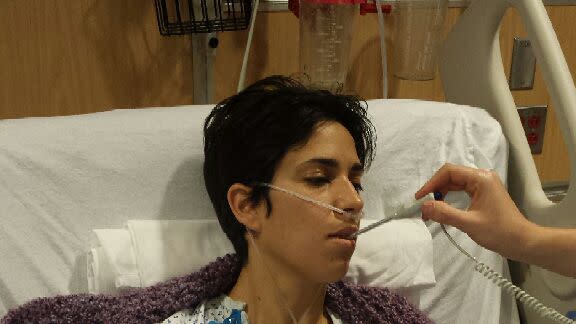
Image Courtesy of CTF
I checked myself into the hospital where doctors ran a series of tests to figure out what was wrong with me only to confirm that all results did, in fact, point toward GBS. Meanwhile, over the next several days, my body continued to weaken until I became completely paralyzed and was moved to the ICU. By the fourth day at the hospital, I could no longer move my limbs; I couldn't swallow, I couldn't blink, I could barely whisper, but somehow, my mind was still sharp. I was trapped in my own body and didn't know if I was ever going to make it out.
A million thoughts raced through my mind during this time. I thought about my family, my husband, and of course my sons, Justy and Alex. What would their lives be like without me? Who would continue fighting for Alex and other NF warriors so that one day they could be treated or even cured?
During my seven-week stint at the hospital, I prepared myself to die (in a minority of cases, GBS can be fatal due to complications; around one in 20 will die from the disease, according to the National Health Service). I truly believe in the power of prayer, so I leaned on God to help through this insurmountable challenge. It wasn't until I started working with a physical therapist that I felt a glimmer of hope. For 10 minutes each day, a PT would visit my room to stretch and exercise all of my limbs. Slowly, but surely, I started to get some feeling back.
I remember one day, I asked him when I would be able to run again. He looked at me confused, as though I was either stupid or highly motivated given I couldn't move a morsel of my body on my own. In fact, doctors told me that I would likely need a year of physical therapy to get my mobility back, and it could take another six months to a year before I could even think about running again. But I was sure I could recover faster than that.
As I continued my rehab to help regain mobility, a process that is an essential form for treatment for GBS, I ultimately got to pedal a foot bicycle on my own. It was simple and uncomplicated, yet grossly intimidating. My PT helped me get started and before I knew it, I was pedaling on my own. At that point, there was no stopping me. I knew in my soul that I was going to run again.
Without giving it too much thought, I signed up for three races while I was still in the hospital — it didn't matter that couldn't even stand, let alone walk on my own. One of those races was the California International Marathon in December 2016. Yes, my health care team thought I was insane, but I knew if I set that expectation for myself, I would follow through.
Outrunning My Illness...and Hopefully My Son's
I was released from the hospital on March 4, 2016, and I ran for the first time on April 9 — just three months after I was fully paralyzed. I didn't have a plan for that run except that I was going to go for as long as I could. I ran for 22 minutes straight.
My doctors called my recovery miraculous. They couldn't say with certainty that running was the reason why I was able to get back on my feet so quickly, but I truly believe it was. Not only do I think it helped me regain strength physically, but the mental grit I developed through the practice played a huge part in expediting my recovery as well. (Related: This Mom of Six Became a 10x Marathoner to Overcome Domestic Violence and Type 2 Diabetes)
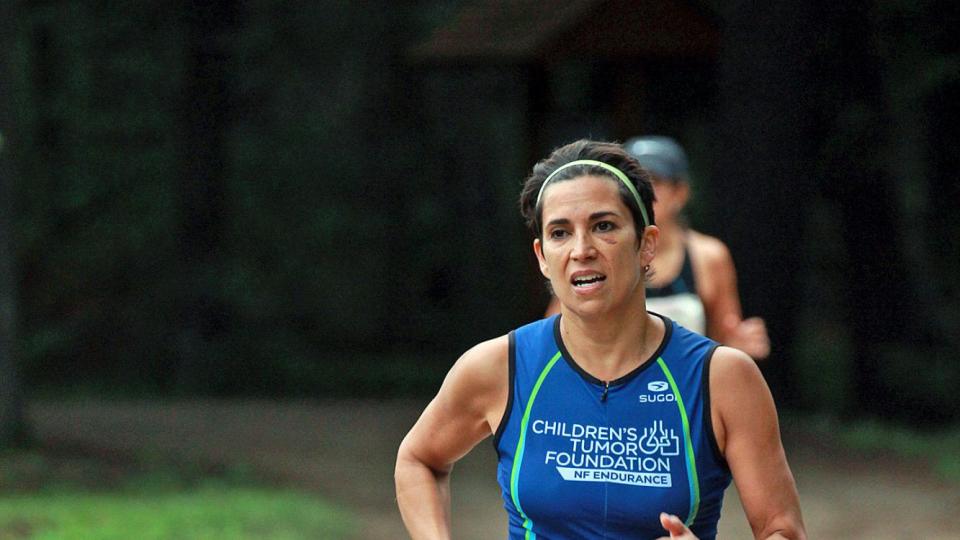
Image Courtesy of CTF
The first 5K I signed up for following my paralysis was the same 5K I ran for the first time back in 2013. There was no better way for me to restart my running journey. Following the 5K, I did a Ragnar Relay, where a large team covers a total of 200 miles while training for the California International Marathon.
As I toed the marathon's starting line that December, my goal was to just make it past the finish line. Despite faceplanting on mile 17, I finished in 4 hours and 44 minutes — a PR for me. That was also the first time I was able to run a marathon from start to finish without walking.
Since then, I've completed two triathlons, eight half marathons, and three marathons — all of which I've completed as a way to fundraise for CTF. And this year I have my eye set on my fifth TCS New York City Marathon.
Like many GBS survivors, I've mostly recovered, but I still have lingering symptoms. I often experience chronic fatigue, foot drop (in which I struggle to lift the top part of my foot), numbness on the right side of my body; sometimes, my right eye will droop as well.
But all things considered, I have a blessed life. I can do everything I need to do for myself, my family, and my friends. And best of all, I still have running.
To me, running means that I have the power to create a future for my son without tumors and without pain. It's also given me focus. When the anxiety, the self-doubt, and self-esteem struggles start to build — and I start to think that there's nothing I can do for my son — I know I can always go out for a run. It's a very prayerful time for me, calming me down and helping me come back to myself. (Related: The Truth About Runner's High)
To all the other NF parents out there, my advice would be not to waste any time on things you cannot change. Instead, try to make the most of your time with your children because you may not have them forever.
When it comes to Alex, I have no idea what his future holds. Is he going to make it to adulthood? Is he going to have a good quality of life? Is he going to remain pain-free? I just don't know. But because I have running, I have perspective. It allows me to think about these things, but also put them to bed when I get home and just love my children.

